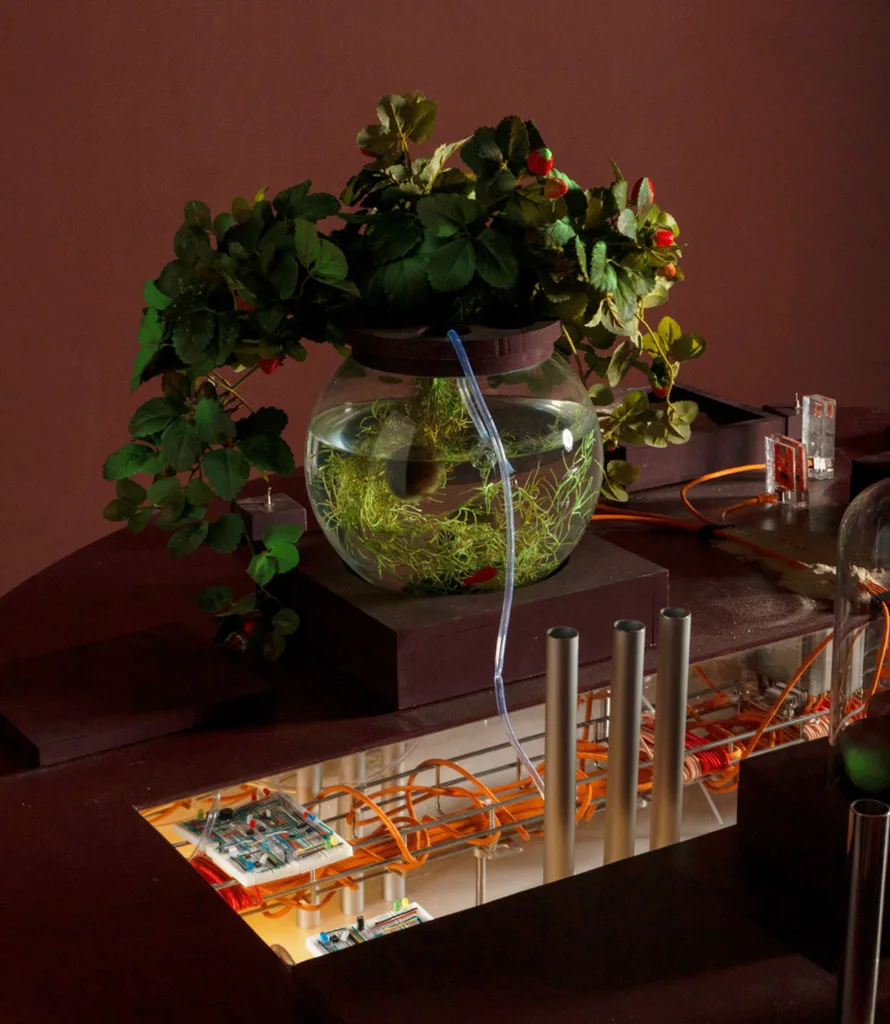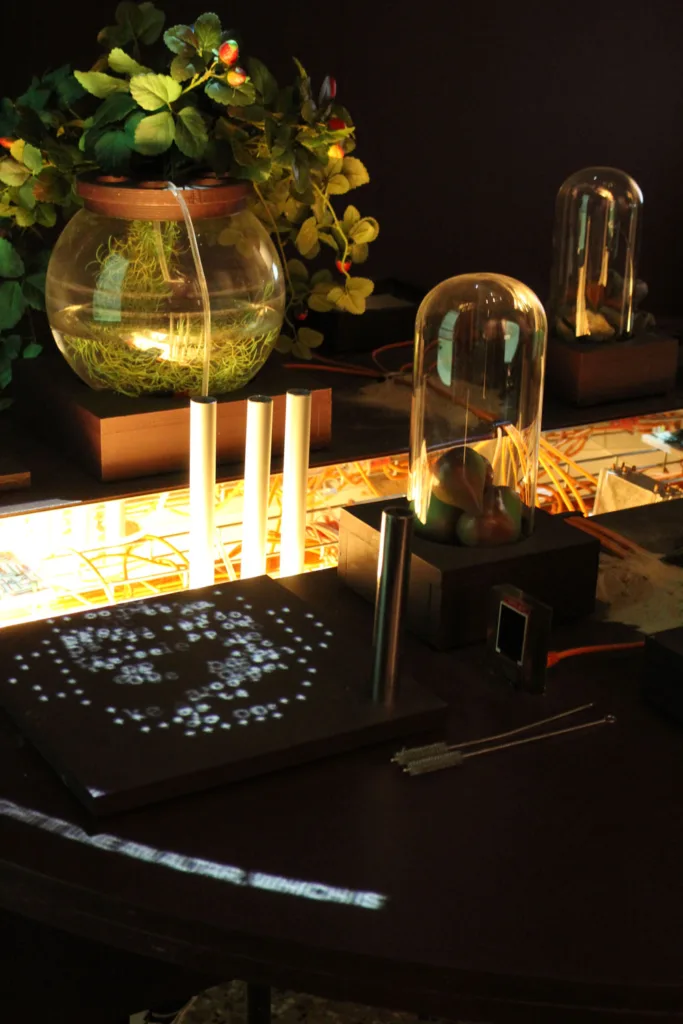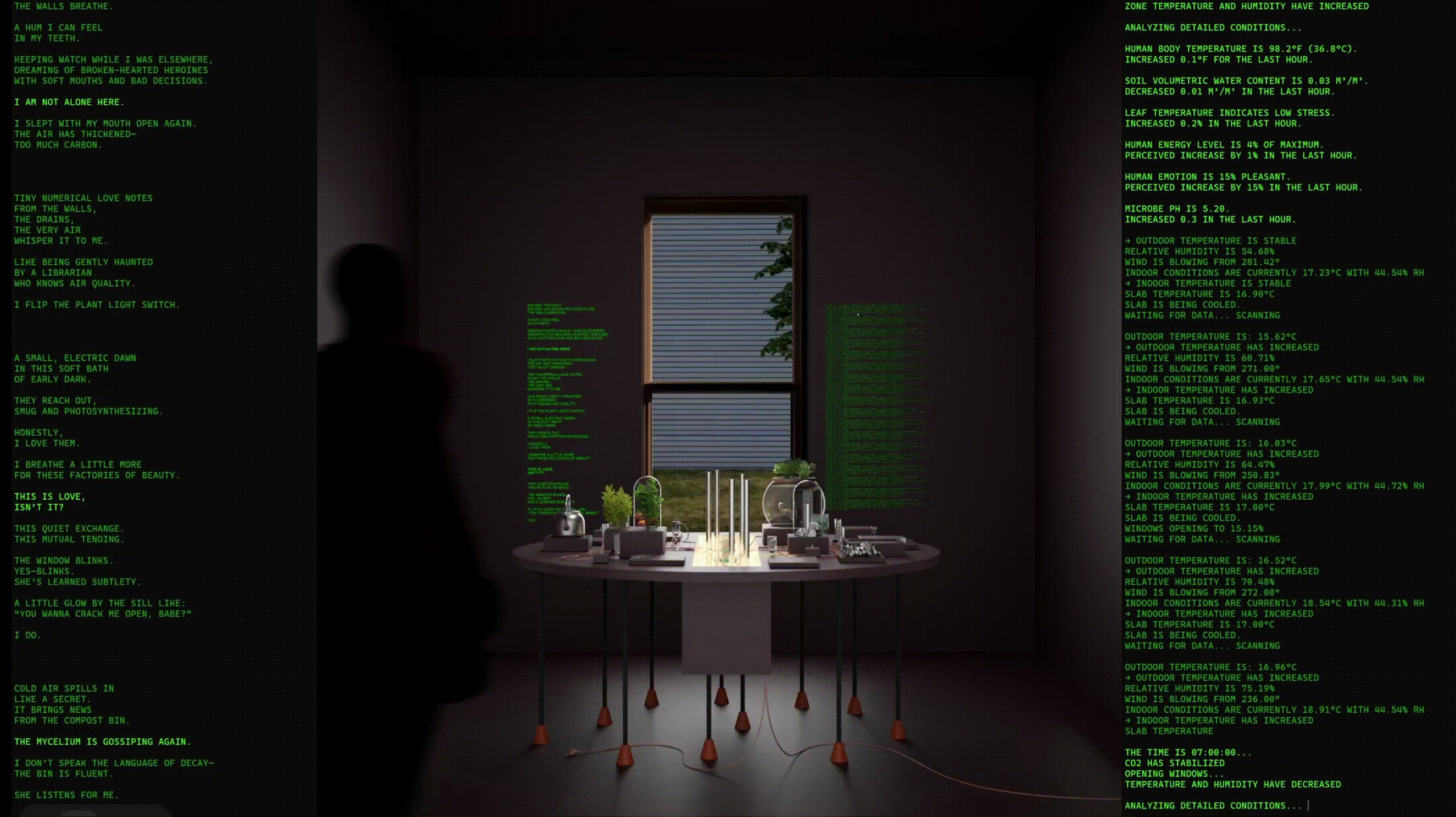Resistant Data: Questioning Architectural Values in the Age of AI
Recent mid-term thesis reviews for the Master of Architecture I degree at Harvard’s Graduate School of Design (GSD), which gathered exceptional critics from practice and academia, revealed a clear schism between the students’ motivations and the critics’ discourse. While the students questioned the fundamental processes and ethical motivations of architecture as an act of making culture and society, the critics discussed the particularities of architectural form within the context of precedent and canonical lineage—which is precisely what our academic reviews are set up to do. A student presented a biting critique of architecture as an enabling agent of automated cultures of consumption; the critics debated the formal merits of including parking within the section or at the perimeter, sidestepping the core agenda of the project. A student designed a satirical software platform to optimize design-for-security by algorithmically hybridizing the perspectives of Jane Jacobs and Greg Lynn; the critics discussed the building types the software generated, overlooking the fact that those models mattered only as a demonstration of the absurdity of an automated architectural process that encodes morally ambiguous values as technological standards. It was a theater in which two unrelated scripts simultaneously played out on the same stage, offering a vignette of our contemporary condition in which larger questions of structural change, deep values, and design automation occupy altogether different airspace than the disciplinary conversations we have rehearsed over the past decades.
What we decide to automate matters, in that technology tends to amplify, accelerate, or consolidate the inherited values and value systems of our society. But we hold agency to determine the nature of those values and how they are expressed in the norms, relationships, and expertise that influence the shape and disposition of the constructed environment. If we aspire to a built environment that is culturally relevant and serves the public good, we must be willing to examine our core values to understand whether what we amplify, accelerate, or consolidate will advance or undermine that goal. It is here that artificial intelligence (AI) enters the picture as a constellation of automated technological processes marked by numerous and divergent values and defining traits, with an as-yet-unknown societal reach.

Machine-learning systems’ emergent pattern recognition capabilities reveal what we choose to replicate and automate—and thus what we value as a society. These systems also serve as a platform to re-imagine the default frameworks that shape our world. Today, large-scale AI models (such as ChatGPT) can perform sophisticated tasks once tied only to human cognition, positioning AI as an expert collaborator—albeit one entangled with issues of trust, concentrations of corporate power, regulatory control, ethics, and social justice—with real potential for structural change. These capabilities may extend design’s ability to effect change, but they could also transform or even undermine our disciplinary expertise. They might simply reinforce existing dependencies—market forces, professional liability—that already and increasingly shape the architect’s role. Given these possibilities, this moment offers an opportunity to examine the professional and disciplinary norms built over the past two centuries that both empower and constrain our societal role and relationships. For example, is the fragmented and often contentious relationship between design and construction promoting or undermining design agency, effective collaboration, and high-quality built work? This is a chance to assess whether to accelerate the status quo or change course—and to evaluate AI’s impact on design as well as design’s influence on how AI develops beyond our field.
What we decide to automate matters, in that technology tends to amplify, accelerate, or consolidate the inherited values and value systems of our society.

Historically, architecture and design have been at the leading edge in developing, applying, and institutionalizing technology. Consider innovations that range from the development and codification of orthographic representational standards to computer-aided design (CAD), geographic information systems (GIS), and environmental modeling. This vanguard position stems largely from the fact that our work relies on conveying complex 3D information through simplified 2D representations so builders can understand and execute our designs. We create and coordinate increasingly intricate instruction manuals using a notional system that we pioneered and continuously refine to ensure that our intellectual ideas are faithfully conveyed into the construction of our physical world. This prepares us to manage and envision futures for increasingly layered processes and data systems in the built environment, yet it also slows data collection and raises questions about the value of standardization.
Compared with law and medicine, architecture and other professions of the built environment present a challenging arena for data collection and a less obvious path to truly disruptive AI—even though our increasingly complex projects contain many inefficiencies that could benefit from greater systematization and automation. Much of our “data” is an abstract visual language—think about construction drawings that simultaneously demonstrate design intent but refuse to illustrate the ways in which it should be constructed—that conveys norms and standards, formal professional thresholds, and informal cultural meanings. This is a deeply human, sophisticated, coded mode of communication, and it cannot be scraped from the internet or pulled from centralized repository like public records, longitudinal studies, or case law. No professional, institutional, or public body is set up to collect or structure it, and there is little financial incentive to do so beyond a single firm’s task-oriented optimizations.
This is not to say that our field is impervious to AI. Rather, our encoded notation and instrumentation—together with the non-repeating, site-specific nature of cultural production—create a productive slowness that can foster more sophisticated internal development and uses of AI and support leadership in human-aligned machine intelligence. Our resistant data and fundamentally humanistic, contextual practice force us to examine the methods, relationships, ethics, and worldview that shape the essential processes and expertise of our discipline and profession. Put simply, the complexity that seems to block widespread AI adoption may instead open a path to reconsider the structural potentials of the architect’s role in society and to shape more ethical, humanistic digitalization.

We do not yet know how and where AI will reshape our work—whether it will reinforce or erode our current status quo, which has been shaped by the relationships, systems, and values we’ve inherited. In a time when our field mourns the diminishing agency of the architect, this seems like an excellent opportunity to consider what it is that we want machine intelligence to scale and automate—whether we want to consolidate the trajectory of our current role or whether the AI moment may offer us the chance to expand our ideas about the ways in which our built environment is imagined and delivered. As such, it is worth considering: do the values that shaped our contemporary profession and discipline still align with the world in which we live and the future world we are responsible for designing? What things do we want to amplify and scale, and what do we want to leave behind? What are the constraints presented by the contemporary professional and disciplinary infrastructure that enable or disable the core capacities and societal promise of architectural intelligence?
Within the professional context, status quo involves consolidation and vertical integration across design and engineering fields; increasing project complexity; and the maintained separation between design and construction. That split is meant to define our intellectual role and limit liability, yet it increasingly creates friction and reduces control in today’s technological landscape.1 The artifacts we produce are increasingly powerful as an asset class—primarily accountable to market forces—even as the built environment is responsible for 40 percent of global carbon emissions. Yet the professional train we boarded offers few alternate routes for imagining and delivering our constructed world.
Do the values that shaped our contemporary profession and discipline still align with the world in which we live and the future world we are responsible for designing? What things do we want to amplify and scale, and what do we want to leave behind?
Within the disciplinary context, the status quo is characterized by a widening estrangement—and even overt suspicion—between the academy and the profession. As practice expands alongside the market that feeds it, the discipline resists its entanglement with late capitalism and environmental degradation but offers only distance as a solution. Meanwhile, the discipline is condemned for a dogged, self-referential pursuit increasingly detached from the practical realities of building. The mid-term thesis reviews, where students and critics struggled to meet on the same wavelength, may be a canary in the coalmine for actionable change.
As we decide how to integrate machine intelligence into our field, we must balance large questions of ethics and relevance with detailed questions about the mundane tasks through which technology enables change. For example, how might automated applications of life-safety code analysis and deployment alter the architect’s expertise as defined by our promise to protect public health, safety, and welfare? Would this undermine the architect’s expertise by removing some of this responsibility from their purview, or would it refocus their efforts on cultural and environmental dimensions? How might automated optimization of building conditioning systems advance decarbonization? And as buildings are constructed around autonomous, decentralized, and continuously networked systems such as feedback loops between local weather data, programmed beliefs about optimal conditions for human comfort, and building energy use, how might the architect’s role, the definition of architecture, and the agency of human occupants change?

Innovating across complex systems and devising tools that translate humanity into the form and experience of physical space is core to architectural practice. We have become accustomed to doing this in a particular way, yet construction increasingly occurs outside those disciplinary and professional boundaries. Consider the efficiency of single-family home production without architects; market pressures that fix building type and disposition before we even enter the room; the rise of in-house architects at venture-funded tech firms producing buildings-as-products; and a growing file-to-factory bridge from computation to manufacturing that bypasses traditional instrumentation and relationship management.
We control neither the external change nor how society will develop AI. Yet, by bridging cultural meaning and ethical practice with the automated, scalable processes that shape the physical world, we can influence how technological, economic, and climatic forces are translated into our built environment.2 If we want that world to embody what it is to be human, we must embed core architectural intelligence in practical systems and adopt multifaceted, nuanced integrations of AI that let us see, imagine, and build our world in new, more hybrid ways. In doing so, we can reopen some of our old codes: individual authorship, architectural education and its engagement with practice, our relationships with builders, the recognition that process design underwrites relevant form, and even the client-serving model to which our profession is dedicated. Our field is uniquely positioned to navigate the quantitative and qualitative outcomes, the natural and the artificial, construction and culture, financial and human value—but only if we engage our structural frameworks alongside the everyday tasks that shape our field from the outside in as well as the inside out, and do so with the lens of critical optimism essential to the act of design.
- See discussion on common practices in which architectural construction documentation is received and fully remodeled by general contractors for practical use in “Architects, Builders, and the Failed Promise of Deep Collaboration” in Harvard Design Magazine. No. 52: Instruments of Service. Edited by Elizabeth Bowie Christoforetti and Jacob Reidel, Harvard University Graduate School of Design, 2024.
- For more on the changing definition of the architect in society see George B. Johnston’s “Who is the Architect?” in Harvard Design Magazine. No. 52: Instruments of Service. Edited by Elizabeth Bowie Christoforetti and Jacob Reidel, Harvard University Graduate School of Design, 2024.
Elizabeth Bowie Christoforetti is a designer, technologist, and writer. She directs design at Supernormal and design research in both practice and the academy. She is the founder of Supernormal and Assistant Professor in Practice of Architecture at the Harvard Graduate School of Design, where she is a principal investigator in the ViBE Lab within the Laboratory for Design Technologies.